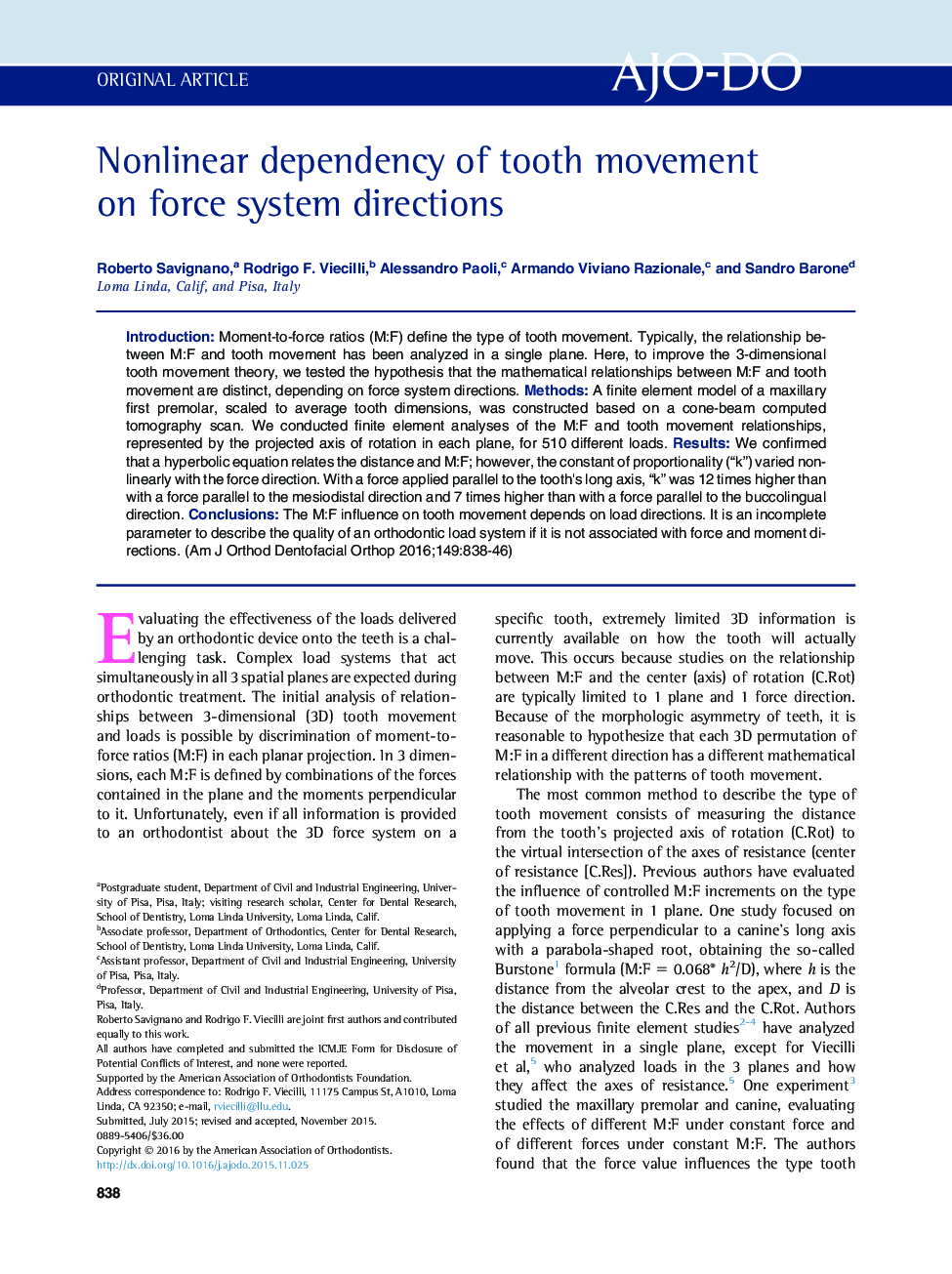| Article ID | Journal | Published Year | Pages | File Type |
|---|---|---|---|---|
| 3115569 | American Journal of Orthodontics and Dentofacial Orthopedics | 2016 | 9 Pages |
•Finite element simulations of load systems were performed on a maxillary premolar.•The tooth's center of rotation was calculated for each scenario.•Tooth movement had a nonlinear dependency on the force system's features.
IntroductionMoment-to-force ratios (M:F) define the type of tooth movement. Typically, the relationship between M:F and tooth movement has been analyzed in a single plane. Here, to improve the 3-dimensional tooth movement theory, we tested the hypothesis that the mathematical relationships between M:F and tooth movement are distinct, depending on force system directions.MethodsA finite element model of a maxillary first premolar, scaled to average tooth dimensions, was constructed based on a cone-beam computed tomography scan. We conducted finite element analyses of the M:F and tooth movement relationships, represented by the projected axis of rotation in each plane, for 510 different loads.ResultsWe confirmed that a hyperbolic equation relates the distance and M:F; however, the constant of proportionality (“k”) varied nonlinearly with the force direction. With a force applied parallel to the tooth's long axis, “k” was 12 times higher than with a force parallel to the mesiodistal direction and 7 times higher than with a force parallel to the buccolingual direction.ConclusionsThe M:F influence on tooth movement depends on load directions. It is an incomplete parameter to describe the quality of an orthodontic load system if it is not associated with force and moment directions.
